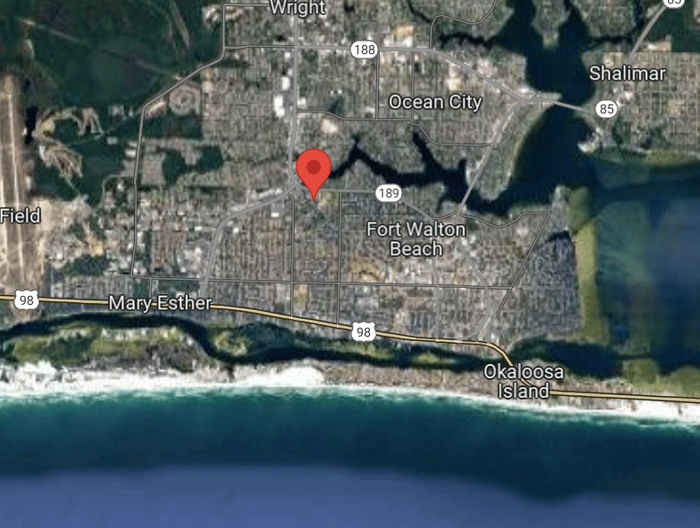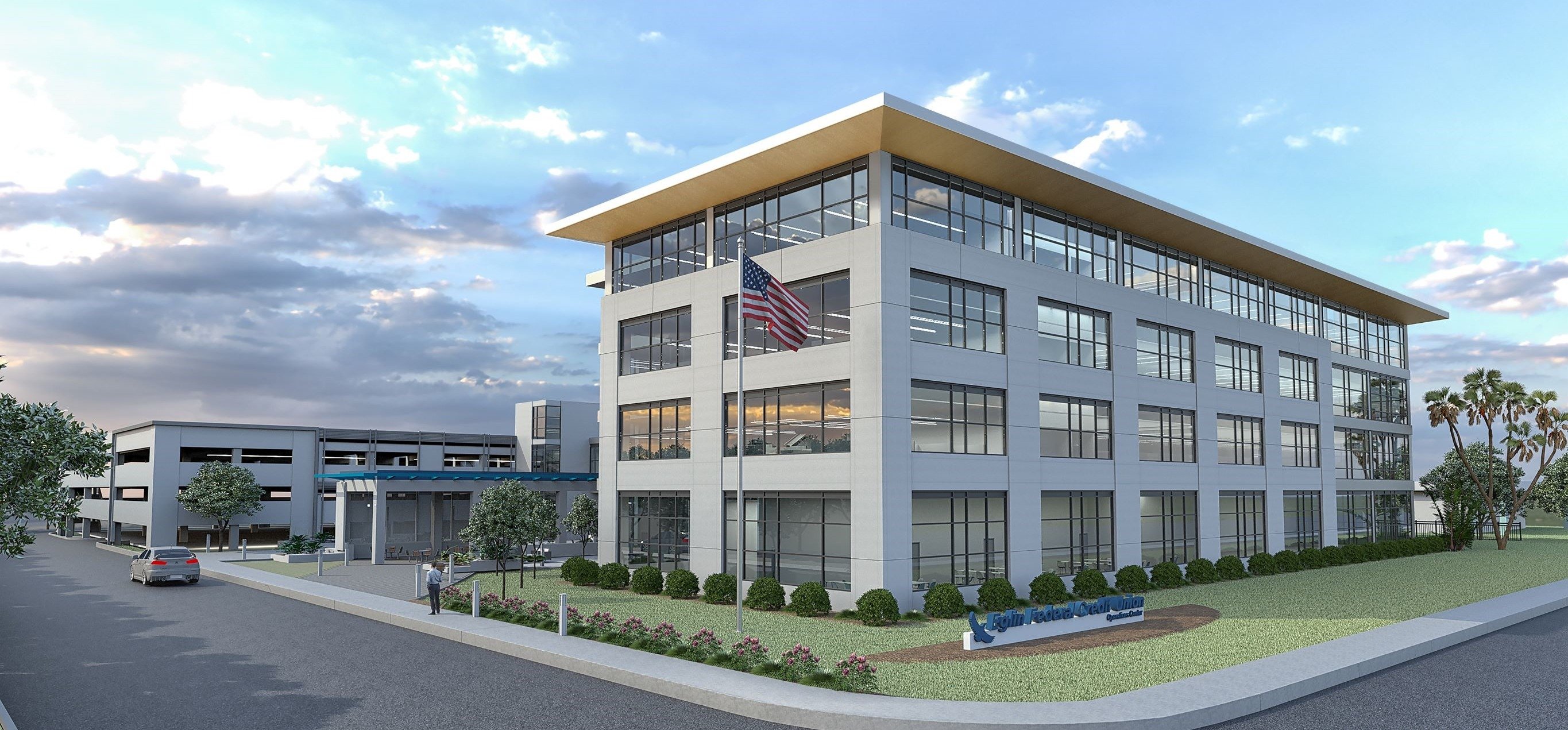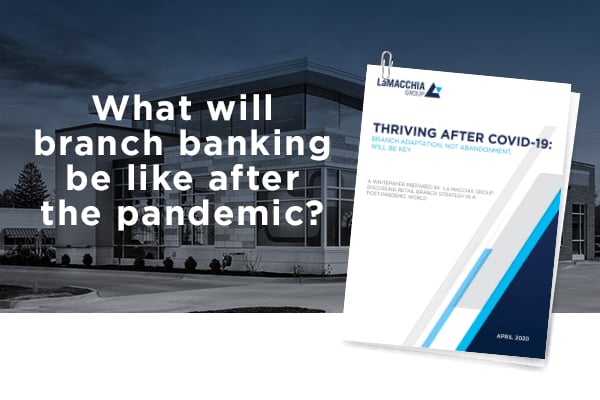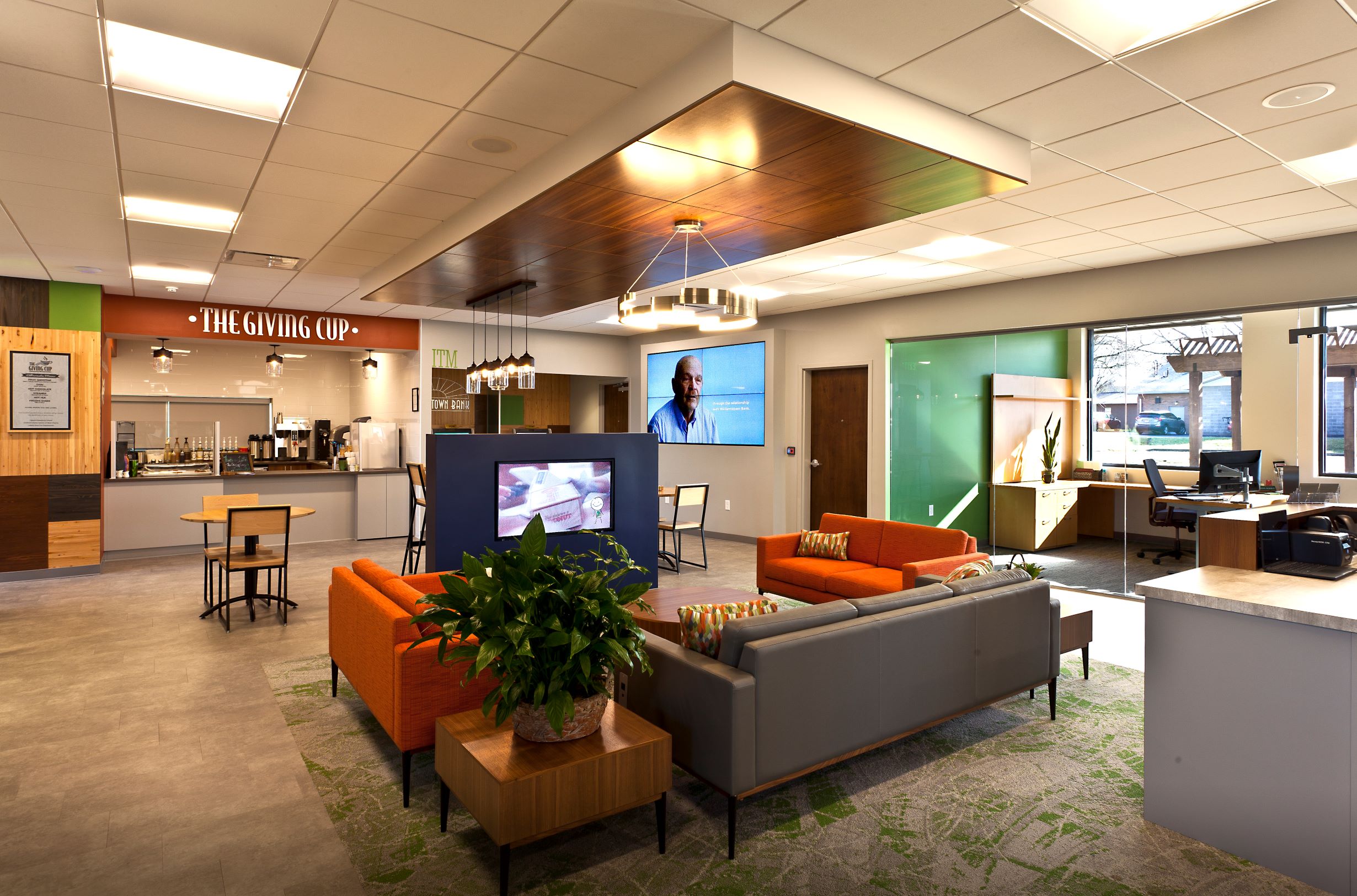Investing in Disaster-Proof Financial Facilities
by La Macchia GroupThe frequency and intensity of extreme weather events are increasing across the United States. These have prompted financial institutions to reevaluate and protect their physical structures against natural disasters. With data from the National Oceanic and Atmospheric Administration (NOAA) indicating a record-breaking year for disasters in 2023, credit unions and banks are making substantial investments to ensure the resilience of their buildings in the face of natural disasters such as hurricanes, wildfires, and tornadoes.
Hurricanes
One large operations center in Fort Walton Beach, Florida, was designed and built by La Macchia Group with the explicit goal of withstanding hurricanes. The strategic selection of the site, elevated 26 feet above sea level, reflects a commitment to minimizing the impact of potential storm surges. “This credit union’s main location actually narrowly missed the eye of this last hurricane. They were probably 50 to 100 miles away from it, but a new location is being built with the specific intent to have it be able to withstand a hurricane.” explained Tom Kennedy, president of La Macchia Group.
Not only does the site's elevation adhere to the county’s hurricane code, but specially designed structural elements all contribute to creating a hurricane-resistant building capable of withstanding 185-mile-per-hour winds. Furthermore, a power generator system capable of utilizing multiple fuel sources was installed, providing added resilience and continuity of operations following a storm. “There's redundancy in almost every effort, and that's something that often doesn't get talked about,” Kennedy said. “That is the concept of N plus 1, basically saying whatever core services you're offering, you'll always want to have one additional to back it up in case there's a failure in that core part of your infrastructure.”
Wildfires
In addition to hurricanes, another natural threat is wildfires. It is important to evaluate a building's location and create fire breaks to prevent the spread of flames. It is a great idea to leverage the Federal Emergency Management Agency's (FEMA) website to assess natural disaster threats and make informed decisions about location. “The FEMA information is fantastic,” Tom Kennedy said. “They have a profile on all of the risk factors—including avalanches, coastal flooding, cold wave, drought, earthquake, hail, heat wave, hurricanes, ice storms, landslides… We do this for our customers. We do a profile analysis to determine what are the risk factors on a given piece of property.”
For buildings situated in wildfire-prone areas, the use of flame-resistant materials such as masonry and metal roofs is becoming standard practice. Additionally, there are limitations of materials under extreme heat conditions so it’s also important to maintain a safe distance from intense heat sources. “At certain temperatures, almost all building materials fail. Even structural steel will ultimately collapse under strong heat,” Kennedy said. “The key is to keep yourself at a distance from the intense heat. If you really believe you're building in an area at risk for wildfire, try to distance your building from an area in which there could be really intense heat.” By using materials that withstand high temperatures and strategically placing buildings, financial institutions can continue to create a protective buffer against wildfires.
Tornadoes
In recent years, the increasing frequency and severity of tornadoes have prompted financial institutions to take proactive measures in constructing financial institutions that can withstand these natural disasters. Recognizing the vulnerability of their facilities, some FIs, particularly those in tornado-prone regions like the Midwest and Kansas, have incorporated tornado shelters within their buildings. This strategic move highlights a growing trend where financial institutions are not only acknowledging the risks but actively seeking solutions to enhance their disaster resilience.
The evolution of building codes signals a departure from the past, rendering older structures obsolete and underscoring the imperative for financial institutions to adhere to contemporary standards. Moreover, the meticulous scrutiny by building departments, particularly in coastal areas, adds an extra layer of assurance as they evaluate every aspect of a new structure's exterior, ensuring compliance with specified wind-resistant features. This heightened attention to detail, from windows to storefronts and roofs, reflects a comprehensive approach to fortifying financial institutions against the destructive forces of tornadoes.
As natural disasters continue to pose a significant threat, financial institutions are taking proactive measures to fortify their facilities against these challenges. The dedication to constructing hurricane and tornado proof buildings and implementing wildfire-resistant strategies reflects a commitment to the safety and continuity of operations for credit unions and their members. Through strategic location selection, adherence to building codes, and the incorporation of protective design elements, financial institutions are leading the way in creating disaster-proof builds that can withstand the forces of nature.
.png?width=248&height=73&name=Logo%20w%20Tag%20-%20Color@300x%20(1).png)




